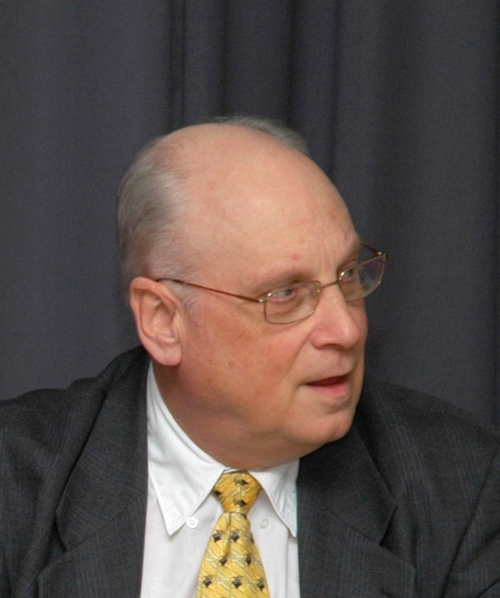 Titus Spoelstra (ASTRON photo)
Titus Spoelstra (ASTRON photo)
Titus Spoelstra
Contributed by Hugo van Woerden
Titus Spoelstra was born in Apeldoorn (The Netherlands) on 28 February 1945. He studied astronomy at Leiden, and obtained his doctorate in 1972 with a thesis on Linear Polarization in the Galactic Spurs at 1415 MHz, based on observations with the 25-m radio telescope at Dwingeloo. This work, showing the magnetic-field structure in the North Polar Spur and other radio loops, has been one of the research highlights of the Dwingeloo Telescope. Titus followed this up with a study, together with Wim Brouw, of the linear polarization of the Galactic background radiation at five frequencies (408, 465, 610, 820 and 1411), in which particular attention was given to spurious polarization sources.
After several years at Leiden Observatory, Titus joined the staff of the Netherlands Foundation for Radio Astronomy at Dwingeloo. There, he served the radio astronomy community in a great variety of ways. He studied the deflections of radio waves in the ionosphere, and their effects on radio source positions, including their use in geodesy for the determination of plate motions. He was involved in multi-author investigations of such diverse objects as novae, Wolf-Rayet stars, and the 1994 impact of the Shoemaker-Levy Comet on Jupiter. Several of these studies involved optical and infrared observations. Titus had a major share in 1993-97 in multi-wavelength studies of gamma-ray sources spanning the whole electromagnetic spectrum.
Of great importance has been his work on data storage systems. He archived all the Dwingeloo HI observations, and all the polarization observations taken at Dwingeloo, on magnetic tape.
Titus further served radio astronomy for many years as Secretary of the Committee on Radio Astronomy Frequencies (CRAF) of the European Science Foundation. His thoroughness, reliability and diplomatic gifts were of great value in this position.
Titus died on 30 April 2010, leaving a great legacy of long-lasting contributions to radio astronomy.
Modified on Tuesday, 17-Dec-2019 10:51:49 EST by Ellen Bouton, Archivist (Questions or feedback)
|
![[IAU logo]](iau_wb_thumb.jpg)
![[URSI logo]](URSI-logo-thumb.jpg)
![[Karl Jansky at his antenna]](jansky_photo_02_thumb.jpg)
![[Reber's Wheaton antenna]](Reber_Telescope_Wheaton_thumb.jpg)
![[Dover Heights]](Dover_Heights_02_thumb.jpg)
![[4C telescope]](GB61-195_4C_telescope_thumb.jpg)
![[Ewen and horn antenna]](ewen_horn1s.jpg)
![[Dwingeloo, 1956]](Dwingeloo-1956-thumb.jpg)
![[Jocelyn Bell Burnell and Cambridge antenna used in pulsar discovery]](burnell2_thumb.jpg)
![[Lovell Telescope at Jodrell Bank]](site_1594_0001-500-334-20180316163019-thumb150.jpg)
![[Wilson, Penzias, and Bell Labs horn antenna]](wilson-penzias-horn_thumb.jpg)
![[6-m Millimeter Radio Telescope in Mitaka, Japan]](6m-thumb.jpg)

